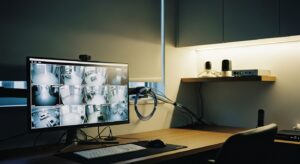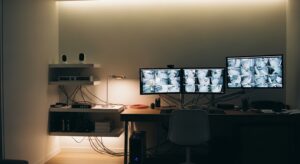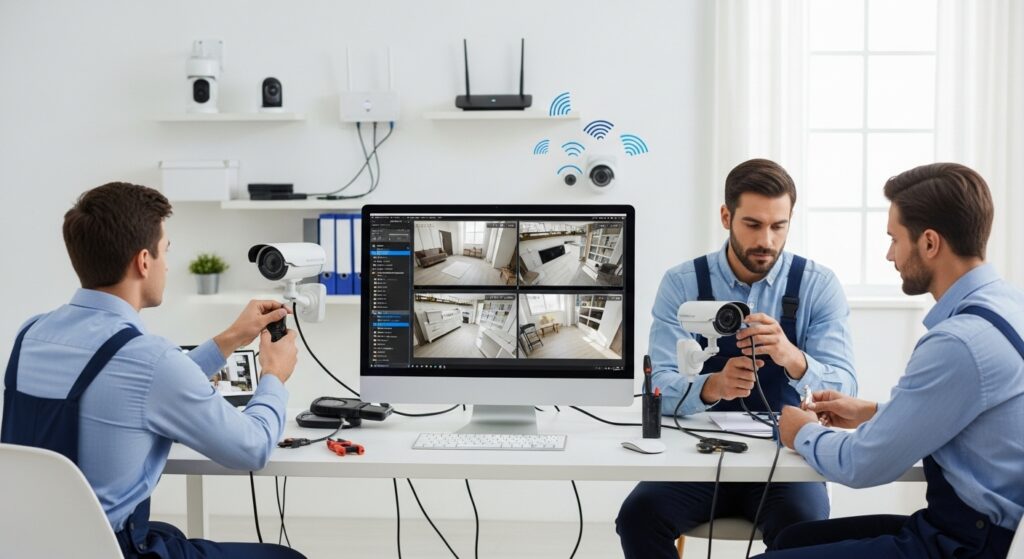Welcome to the guide from National Security & Alarm Installers Co. Ltd, where we share practical, hands-on methods to connect your CCTV camera to a computer. Whether you are installing surveillance at home or business, or exploring Security System Installation Services in Brooklyn and related services, this article dives into real solutions, common problems, and how to overcome them. We aim to serve homeowners, small business owners, or DIY installers facing hurdles like network compatibility, driver issues, or camera discovery. We’ll use plain language, avoid jargon, and keep each section user-centered and engaging.
Why Connect a CCTV Camera to a Computer?
Before stepping into methods, it’s important to understand why one would want this setup. Many users face these pain points:
- Managing multiple cameras in one place rather than switching monitors
- Recording or reviewing high-quality footage directly to PC’s storage
- Integrating security camera systems installation with other home or business systems
- Enabling remote viewing or live feeds through software
- Diagnosing problems (signal loss, network drops) from the computer end
When you connect a CCTV camera to a computer, you gain control over recording resolution, storage management, motion detection software, and centralized viewing. For clients who also hire Surveillance Camera Installation Brooklyn NY, CCTV Camera Installation Brooklyn NY, or Smart Home Security Integration Brooklyn NY, having the computer access gives additional flexibility to scale, add analytics, or integrate with alarms. At National Security & Alarm Installers Co. Ltd we often combine this with Custom Security Consulting Brooklyn NY so your entire setup is cohesive from the start.
Core Approaches: Wired, IP, and USB Methods
There are three popular methods to connect a CCTV camera to a computer. Each has strengths, limitations, and situational use cases.
| Method | How It Works | Pros | Common Issues | Best Use Cases |
|---|---|---|---|---|
| Analog CCTV with DVR/ADC + capture card | Traditional analog cameras go to a DVR or analog-to-digital converter; computer reads via capture card | Works with legacy setups, cost-effective | Signal noise, cable length limits, driver conflicts | Upgrading older systems or hybrid setups |
| Network (IP) camera via Ethernet / NVR | IP camera connects via LAN / PoE; computer accesses via IP address or NVR interface | High resolution, remote access, easy scaling | Network misconfiguration, antivirus/firewall blockage, camera discovery | New installations, security camera installation home or business security camera installation |
| USB or direct camera interface | Some cameras support USB or direct video out | Plug-and-play simplicity | Limited distance (USB cable length), fewer models | Indoor short-run installations, testing or temporary setups |
In the real world, IP camera methods are most common today, since they align with home security camera system installation and security camera systems installation trends. But you should know all three, because you may have legacy analog hardware already.
Step-by-Step: Connecting an IP (Network) CCTV Camera to Your Computer
This method is the most common and future-proof. Below, you’ll find a user-friendly walkthrough that covers everything from wiring to software.
1. Power and Network Setup
Most IP cameras use Power over Ethernet (PoE), meaning one Ethernet cable carries both power and data. If your camera supports PoE:
- Use a PoE switch or injector.
- Run Cat5e or Cat6 cable from the switch to the camera.
- Ensure that the switch and camera are in the same local network segment as your computer.
If the camera uses separate power (12 V DC or similar), you need an external adapter and then a network cable for data.
2. Discover the Camera on Your Network
Once powered and connected:
- Use software that came with the camera, or manufacturer’s “find camera” tool.
- Alternatively scan your LAN with IP scanning tools (e.g. Angry IP Scanner, Advanced IP Scanner).
- The camera typically gets a default IP like 192.168.1.10 or via DHCP.
If your computer is on a different subnet, you may need to change your PC’s IP temporarily to reach the camera.
3. Web Interface / Software Access
Enter the camera’s IP into your web browser. You may need to install a plugin or allow plugin permissions. From there:
- Adjust video settings: resolution, compression, frame rate
- Set time, date, and NTP server
- Enable user accounts, set passwords
- Enable RTSP (Real Time Streaming Protocol) or ONVIF support
Many modern cameras support ONVIF, making them compatible with a wide array of CCTV recording and viewing software.
4. Recording or Viewing Software on Computer

On your computer, select software such as:
- Free NVR software (e.g. Blue Iris, iSpy, ZoneMinder)
- Manufacturer’s companion app
- Generic ONVIF client
Configure the software:
- Add the camera via IP (or ONVIF discovery)
- Enter credentials
- Choose storage folder
- Enable motion detection or continuous recording
Once configured, you can stream, record, rewind, and manage all cameras from one place.
5. Troubleshooting Common Issues
If the camera doesn’t appear or stream:
- Confirm that firewall or antivirus is not blocking it
- Check that PC and camera are on same subnet
- Ping the camera’s IP to test connectivity
- Ensure camera firmware is updated
- Clear browser cache or try alternate browsers
With these steps you can tame most issues you encounter.
Analog CCTV Setup via DVR / Capture Card
Many existing camera systems use analog (CVBS) cameras. You can connect them to a computer via a digital video recorder (DVR) or capture card. While older, this remains relevant for security camera contractors near me who upgrade or integrate legacy gear.
1. Wiring from Camera to DVR
Analog cameras are wired via coaxial (RG59) plus power. They feed into a DVR or network hybrid NVR/DVR box, located where the cables terminate (basement, closet, security cabinet).
2. Using a DVR with Computer Access
Many DVRs are network-capable:
- Connect DVR to same local network as your computer.
- Use manufacturer software or browser interface to access live feed.
- Some DVRs support ONVIF, letting third-party NVR software talk to it.
3. PCI / USB Video Capture Card Method
If you prefer to bypass the DVR:
- Install a multi-channel capture card inside the computer (PCIe) or plug in a USB capture device.
- Feed analog video outputs from cameras (via BNC connectors) into the capture card.
- Install capture card drivers and software.
- Use the supplied application to view, record, and manage channels.
4. Common Challenges & How to Solve Them
- Signal degradation over long coax cable: use high quality, avoid splits
- Driver incompatibilities: ensure correct version, match OS
- Sync issues: some capture cards conflict with other hardware
- Recording performance: use fast disk (SSD or 7200 RPM or RAID)
This analog route works particularly well for businesses upgrading older cctv security installers setups or blending legacy and IP systems.
USB / Direct Camera Methods
Some cameras, especially simpler or prototype units, support direct USB or analog video out (e.g., composite video). While rarely used in large setups, it’s handy for quick testing or indoor use.
1. USB Camera with UVC Support
If your camera supports USB Video Class (UVC), connecting is straightforward:
- Plug camera USB into computer
- OS recognizes it as a webcam
- Use normal software (VLC, OBS, or security NVR app) to view it
This method is limited by cable length (~5 m standard), and fewer cameras support UVC in professional security systems.
2. Analog Video Out (Composite) to PC
This is niche, but possible if camera has video out:
- Use a small video capture dongle (composite to USB)
- Install driver/software
- Access the video feed in your computer software
Because this is infrequent in modern home or business setups, it’s useful mainly for maintenance or troubleshooting.
Pain Points Users Face (And How to Solve Them)
Let’s list common frustrations and how to address them:
- Camera not discovered on network → subnet mismatch, firewall, wrong IP
- Poor video quality or lag → low bandwidth, weak switch, compression settings
- Recording fails or stops → fill disk, software conflict, drive write speed
- Multiple cameras, one PC overload → use NVR or distribute load
- Firmware incompatibility / updates → always update and keep backups
- Power issues (voltage drop over cable) → use PoE switches or power injectors nearer to camera
By anticipating these problems, a user can plan better, or call a professional in. At National Security & Alarm Installers Co. Ltd, our technicians often handle these exact issues when we do security camera installation home or business security camera installation, and clients appreciate that we preempt these pitfalls.
When to Call Professionals
You may try the DIY route, but in many cases hiring professionals gives peace of mind and better reliability. Consider calling expert installers when:
- You have a large site with 8+ cameras
- You need Smart Home Security Integration Brooklyn NY (camera + alarm + automation)
- There’s complex wiring through walls, ceilings, or multiple floors
- You demand true redundancy, high frame rates, or 4K resolution
- You want Custom Security Consulting Brooklyn NY to design your layout
In Brooklyn and nearby, services like Security System Installation Brooklyn NY by National Security & Alarm Installers Co. Ltd combine expert wiring, network setup, and testing, removing guesswork from your system.
Comparing Methods in Summary
Here’s a side-by-side comparison in a compact form:
| Feature | IP Camera Method | DVR / Capture Card | USB / Direct |
|---|---|---|---|
| Scalability | High (add more cameras) | Moderate (based on DVR channels) | Low (limited ports) |
| Distance support | Long (Ethernet, PoE) | Moderate (coax limits) | Short (USB limits) |
| Video Quality | High, gigabit support | Good but analog constraints | Dependent on sensor |
| Software flexibility | Wide (ONVIF, NVRs) | DVR manufacturer or capture app | Simple webcam tools |
| Complexity | Moderate | Higher (mix analog + drivers) | Low for small setups |
This comparison helps you choose based on your size, budget, and existing infrastructure.
Best Practices & Tips

To make your connection reliable and future-proof, follow these tips:
- Use quality cables (Cat6, shielded)
- Label each cable end to track cameras
- Secure power: avoid voltage drop by limiting cable length or using PoE
- Segment networks: isolate camera network from main office LAN if possible
- Use UPS (backup power) for cameras and your computer
- Enable encryption and strong passwords (avoid default admin/admin)
- Regularly backup video files or use RAID
- Keep firmware and software up to date
- Document your IP addresses, login credentials, and wiring maps
These practices help reduce downtime, simplify maintenance, and reduce technical pain points over time.
Integrating with Broader Security System
Once your cameras are connected to a PC, you can integrate them with larger security systems. For example:
- Link camera triggers to alarms or sensors
- Automate alerts: when motion is detected, trigger email or SMS
- Sync with home automation (lights, locks)
- Share feeds with mobile apps or cloud services
- Use analytics: face detection, license plate recognition
Such integration is often part of home security co offerings. In Brooklyn or other areas, combining CCTV Camera Installation Brooklyn NY with full system installation helps create robust, cohesive systems. That’s where National Security & Alarm Installers Co. Ltd excels—by blending camera networking with alarms, door entry, sensors, and smarter workflows.
Final Thoughts
Connecting a CCTV camera to a computer is not just a technical exercise—it’s about control, reliability, and extending the value of your surveillance. By choosing the right method (IP, analog, or USB), following step-by-step setup, solving network or driver issues, and applying best practices, you’ll build a system that works smoothly.
If you’d rather leave it to professionals, seeking security camera installation home, security camera contractors near me, or cctv home security installation services ensures that you don’t wrestle with cables, IP settings, or software conflicts. Especially when scaling or integrating with alarms, professional help from a trusted company like National Security & Alarm Installers Co. Ltd ensures your system is robust. When you’re ready for Security Cameras Installation Brooklyn NY or custom security design, check out our offering at our Brooklyn NY service page.
Whether you DIY or hire out, you now have a clearer map of how to connect a CCTV camera to a computer, tackle pain points, and plan ahead. For tailored setups, more cameras, or maintenance, call 718-760-9305 for expert help at National Security & Alarm Installers Co. Ltd.



